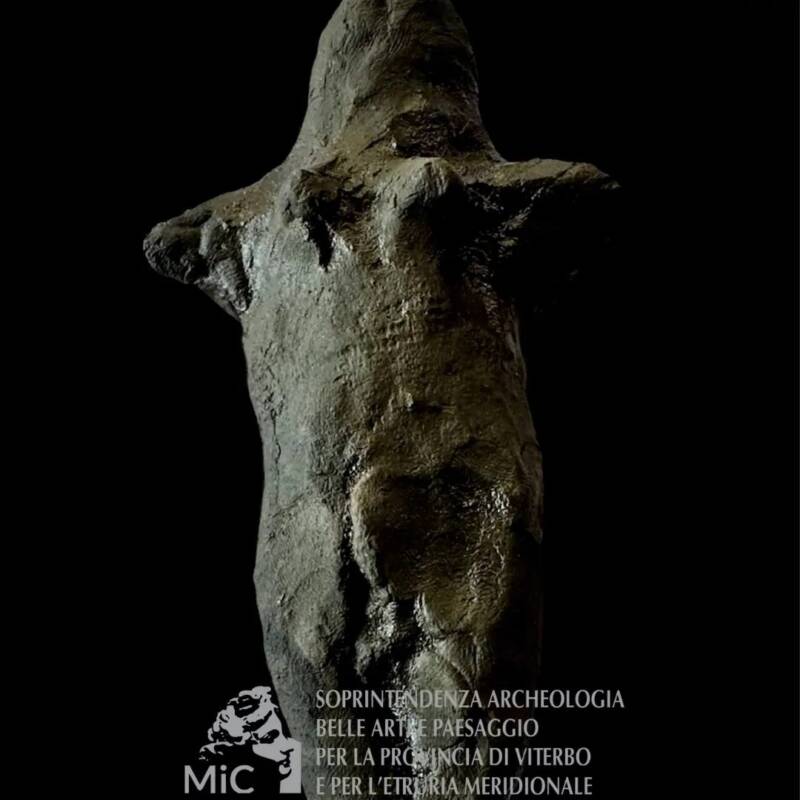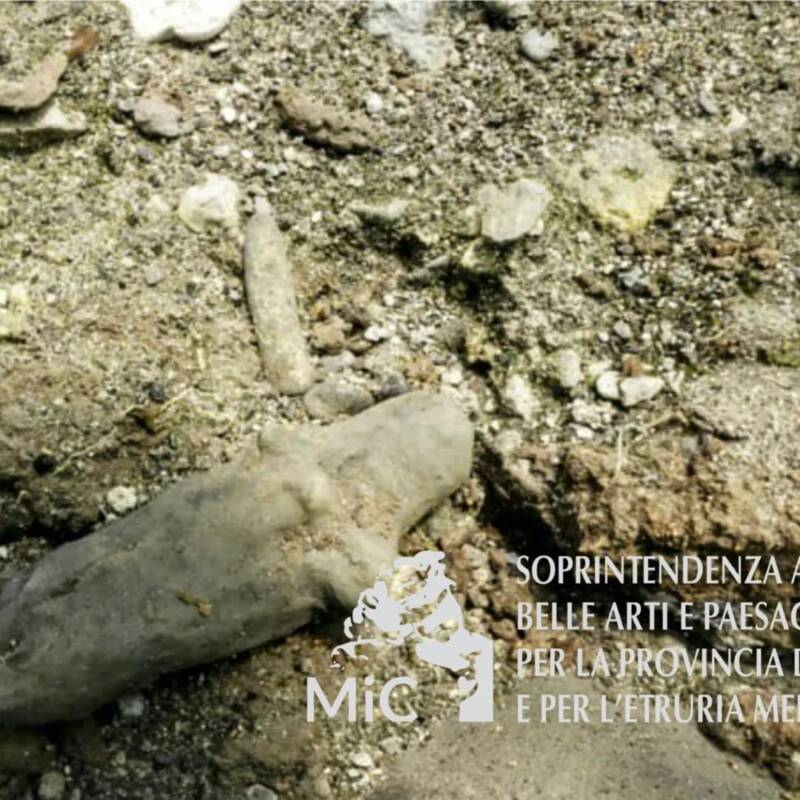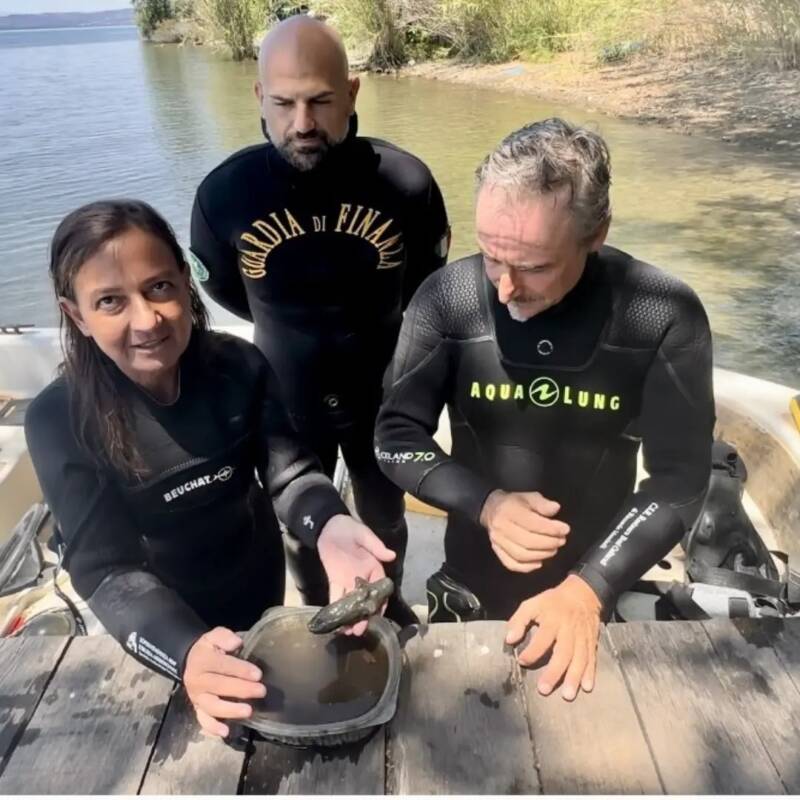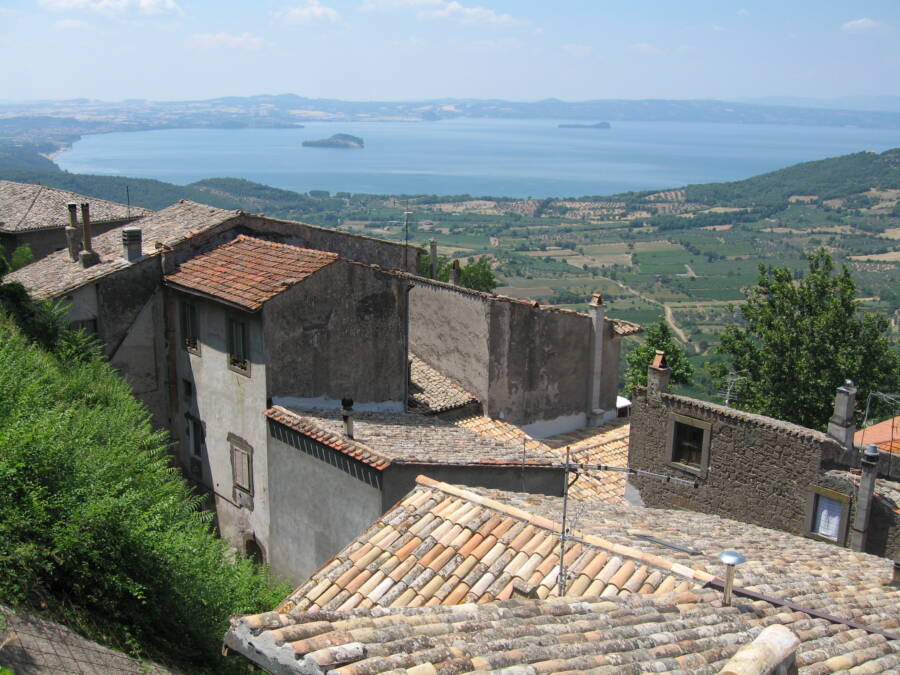Measuring six inches tall and made of clay, the figurine was likely used in prayer rituals, but was left unfinished before sinking to the bottom of Lake Bolsena several millennia ago.

Superintendence of Archeology Fine Arts Landscape for Southern EtruriaThe 3,000-year-old goddess figurine discovered in Lake Bolsena, a volcanic lake roughly 50 miles northwest of Rome.
In July 2024, divers working to build an underwater path at the Gran Carro archaeological site in Italy’s Lake Bolsena discovered a 3,000-year-old figurine.
This figurine, made of clay and crudely formed, dates back to the early Iron Age (9th or 10th century B.C.E.). Researchers believe that it was a votive figure meant for use in domestic rituals, and despite sitting underwater for several millennia, it still features the handprints of its maker.
This discovery is one of thousands of Iron Age artifacts uncovered in this area since the 1960s, adding to its rich history, which remains understudied to this day.
Divers In Lake Bolsena Discover An Ancient Goddess Figurine

Superintendence of Archeology Fine Arts Landscape for Southern EtruriaThe goddess figurine at the bottom of Lake Bolsena.
Last month, police divers working on building an underwater path in Lake Bolsena as part of Italy’s National Recovery and Resilience Plan discovered a peculiar clay figurine.
Archaeologists determined that the figurine dates back roughly 3,000 years, to the Early Iron Age. Although its features are undeveloped and clearly unfinished, the six-inch-long figurine still contains the handprint of its creator. Other imprints on the figurine show that it was once clothed.
“The newly sketched figurine, even in female connotations, is made of freshly baked dough, and still shows the marks of the fingerprints of the modeler and the imprint of a plot of fabric under the chest, a sign that it was probably supposed to be “dressed,” researchers from the Superintendence of Archeology Fine Arts Landscape for Southern Etruria stated in a Facebook post.

Superintendence of Archeology Fine Arts Landscape for Southern EtruriaThe dive team showing off their discovery.
Researchers believe that the sculpture was likely a votive figure used in domestic rituals. This idea has been supported by researchers’ discovery of other examples of similar figurines from subsequent periods, pointing to a long-held tradition of votive figurine creation in the area.
Overall, researchers are excited at the prospect of discovering a piece of Italy’s Iron Age history, especially since little is known about this time period in the region.
“This important archaeological context that is giving us aspects of daily life from the first Iron Age (late 10th-century B.C.E – early 9th-century B.C.E), [of which] still little is known in southern Etruria,” researchers said.
The History Of Lake Bolsena And The Gran Carro Archaeological Site

Public DomainA view of the southern point of Lake Bolsena.
Lake Bolsena formed between 600,000 and 200,000 years ago during eruptions of the Vulsini volcano. This volcano may have had its most recent eruption a few centuries before the fall of Rome, but many researchers think it was actually several millennia before that, and today, it’s considered inactive by the Italian government.
Researchers did not know of the area’s rich Iron Age history until 1991, when they discovered a collection of submerged stones that they now believe to be remnants of a large structure built next to a hot spring. In 2020, researchers studied the soil under these stones and found ceramics and other artifacts underneath it from the early Iron Age.
During this period, the city of Aiola was home to a village that left behind thousands of artifacts, such as pottery, jewelry, and this goddess figurine. Researchers have been finding these artifacts since the 1960s, but it is only recently that researchers have seriously examined and studied Aiola’s strong Iron Age history.
This area was inhabited until the last days of ancient Rome, evidenced by the discovery of coins from Roman emperor Constantine the Great from the 4th century C.E. Seismic activity from the Vulsini volcano then buried the village underwater, where it remains today and is known as the Gran Carro archaeological site.
Now, the discovery of the goddess figurine is yet another remarkable find from this often-overlooked hotbed of Iron Age history.
After reading about the goddess figurine, dive into the story of the Venus of Willendorf, the 30,000-year-old statue of a Paleolithic woman. Then, read about the Venus De Milo, the world’s most famous sculpture.





